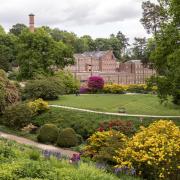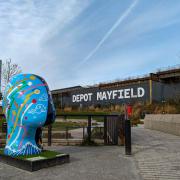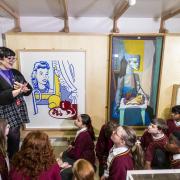When things go wrong, North West horse owners have a world-class facility on their doorstep. Martin Pilkington reports

The Philip Leverhulme Equine Hospital is part of The University of Liverpool Veterinary School, the first to be established as part of a university when it opened in 1904. Today, it not only teaches undergraduate and postgraduate students, including qualified vets developing their skills, but it is a major research centre as well as a world-class place for the treatment of horses.
‘A huge part of our role is the hospital work,’ says Professor Catherine MacGowan, head of the school’s equine division. ‘All veterinary hospitals, just like human hospitals, have to stay open every day, because animals can’t choose when they’re going to be sick. We have to be open all the time, so all the specialist clinicians and residents work as a huge team to provide cover around the clock. We take turns to provide out-of-hours cover.’
The horses referred to the hospital by vets – they don’t see first opinion cases - can have problems that range from the relatively minor, like a cut leg, to life-threatening ailments such as colic. ‘If you have a horse with colic in Lancashire then we’re the nearest large referral centre, that’s our great specialty. If you need specialised hospital care for your animal even as far as the Lake District we’re the likely destination,’ the professor says.
She stresses that the status or value of an animal has no bearing on how it’s treated. ‘We take all sorts of horses across the board - we treat all patients the same. They can be a little pony or some high-value Olympic-eligible eventer, we see all of them and treat them all with the same respect and level of attention.

‘We do see some racehorses, and every year we have vets going to many of the local racing events, including to the Grand National, and similarly we have vets going to all the major equestrian events in the area as well. We even have vets at the National Pony Club Championships, so a lot of outreach activity.’
The wider community in return continues to be generous to the hospital. The Lord Leverhulme Charitable Trust has recently sponsored a resident, for example. Money from the Horse Race Betting Levy is paying for another resident and for research and the recently added Henry Edwards Learning Centre came about after a major donation from an alumnus of the university. Eye research by Catherine’s colleague, Fernando Malalana, is being supported in part by the PetPlan Charitable Trust.
Being part of a university department means research is a significant activity for the hospital. Catherine reels off a list of colleagues and fields they’re working in. ‘Professor Debbie Archer is researching actively in the area of colic, Professor Peter Clegg, Dr Peter Milner, Dr Ellen Singer and Dr Rubio-Martinez are researching musculoskeletal problems like bone and joint and tendon diseases and Harry Carslake working with me researching endocrine disease.’
It’s a highly technical field needing high-tech tools, exemplified by the imaging equipment the hospital has invested in to help with diagnoses, including CT, MRI, digital radiography, gamma scintigraphy and top-of-the-range ultrasonography. The wider facilities available continue to develop too, a new Intensive Care Unit added in 2011, for example. That is named after Professor Barrie Edwards, a world leader in colic surgery. Under him, the department gained global prestige in the 1980s.

The teaching, research and investment all add up to improved care for horses. ‘We strive to provide excellence in equine care and maintain our teaching of undergraduates and postgraduates in a state-of-the-art environment,’ concludes Catherine. ‘We feel we’re in a unique position where we have the benefit of a busy hospital and a large critical mass of research-active staff, and we can use this to push the frontiers of equine veterinary care.’



























